Anxiously, I paced the porch deck of the houseboat at Venice Marina on a cold January morning. We waited for Capt. Damon McKnight to pick us up in his monster Freeman cat for the run out to the oil rigs off Louisiana to target wahoo. My close friend Dave Weston had joined me on this trip after hearing my accounts of previous trips to Venice, where I’d experienced some of the best fishing the world has to offer.
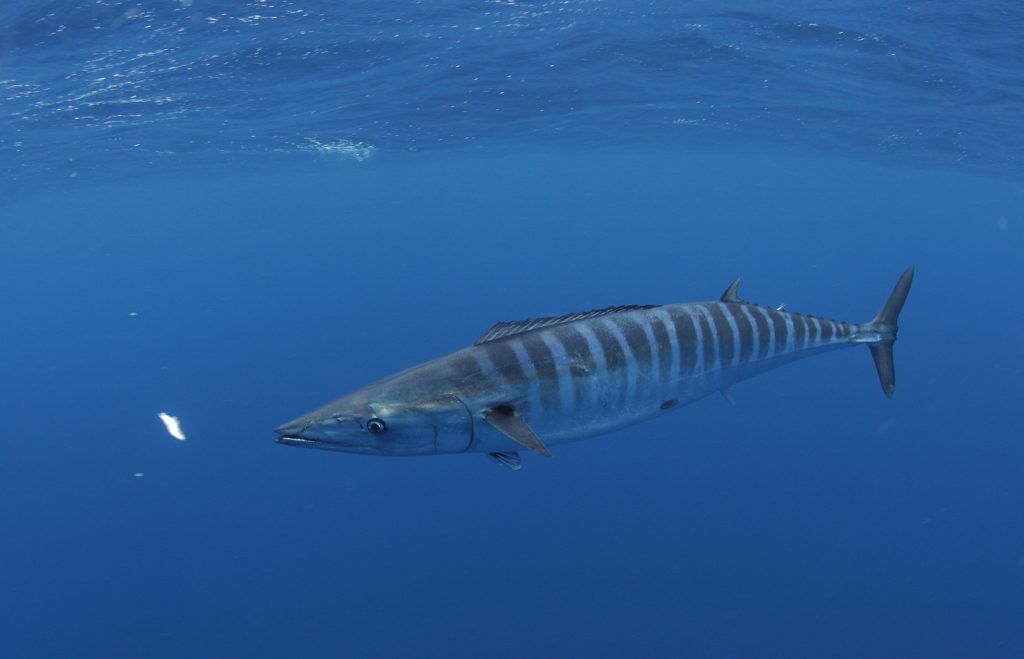
Weston and I had been planning this trip for more than two years, determined to test the legendary winter wahoo fishing out of Venice. We had struggled to find fishable weather during the short time window of January and February, when big wahoo are found at Gulf of Mexico oil rigs some 15 to 30 miles off Venice.
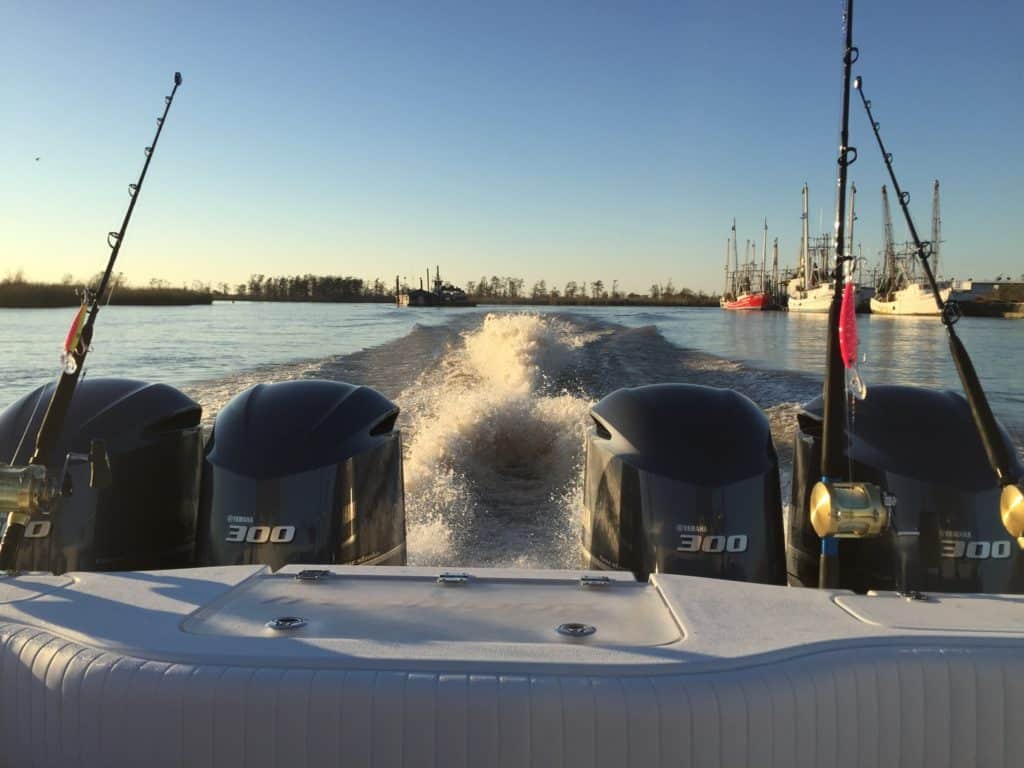
Deepwater Rigs in Sight
Finally, Mother Nature was on our side, with a forecast of 2- to 3-foot seas. As we crossed into the Gulf through the Southeast Pass of the Mississippi River, a significant chop, seemingly left over from the previous week of windy conditions, greeted us.
Nonetheless, the ride in the high-bow catamaran was surprisingly comfortable, and with four 300-hp Yamahas pushing the boat at a cruising speed of 45 knots, we found ourselves approaching the first rigs within 30 minutes once outside the mouth of the Mississippi.
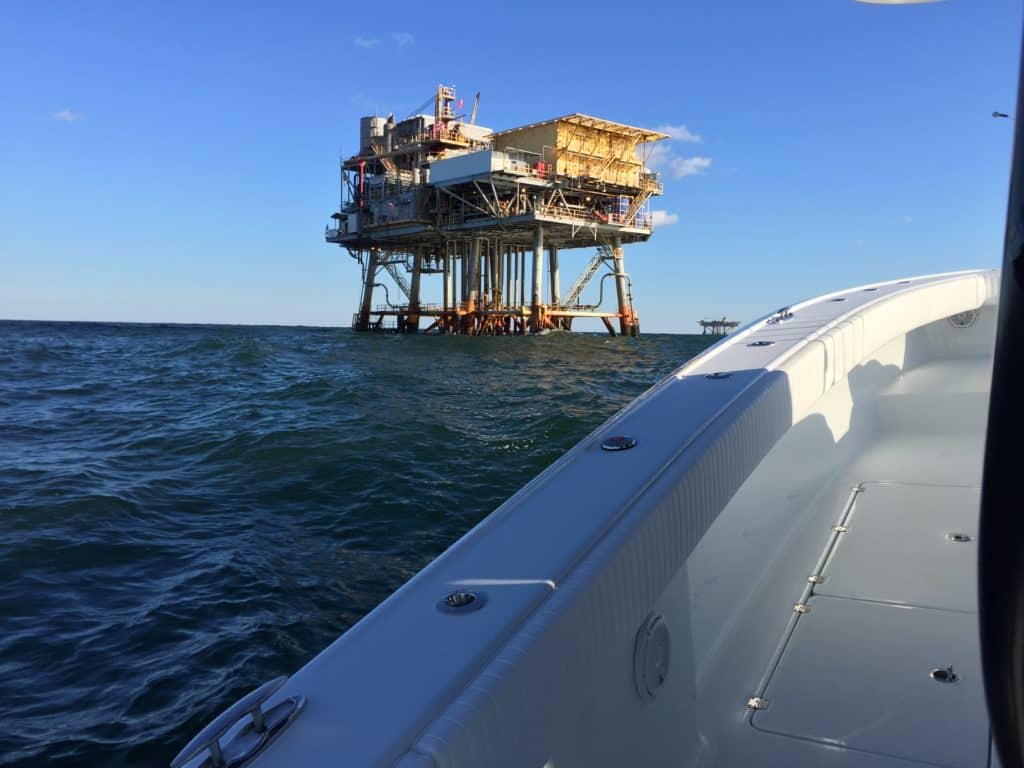
But we found conditions marginal for wahoo at those first rigs, with greenish-brown water at 58 degrees F. Wahoo normally appear around the rigs in the Gulf where water temperatures run at least 62 degrees and less than 86. Within that range, significant temperature breaks attract wahoo, which are often found frequenting the colder side of such breaks.
“I look not only for temperatures more than 60 degrees,” McKnight says, “but also signs of baitfish on the big Simrad sounder. Some rigs are better at holding wahoo than others, so I spend most of my time on those.”
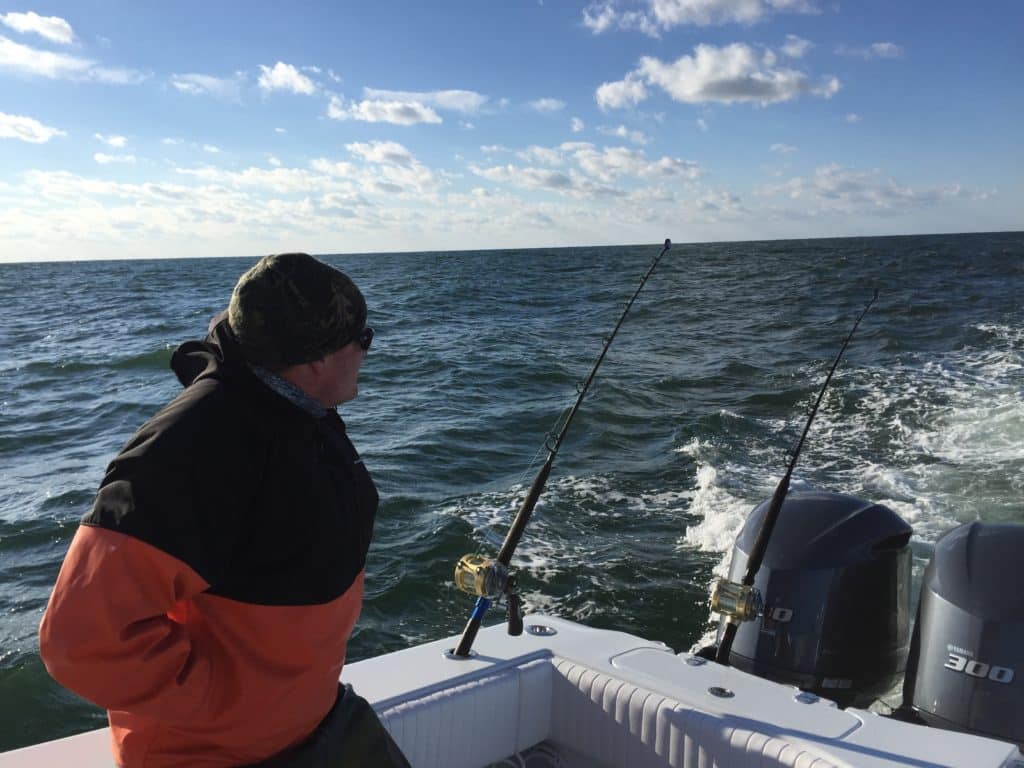
Despite the cool water at the first rig, McKnight felt it was worth a shot, and we set out a trolling spread consisting of two 30-wide Shimano Tiagras and two Shimano Talica II 25s, all spooled with 60-pound braid and 100-pound mono top shots. The skipper ran Rapala X-Rap Magnums, deep divers designed to reach 25 to 30 feet at 7 to 8 knots.
Most large diving plugs with large lips, designed to run consistently deep, will catch wahoo in the Gulf off Venice. Many pros favor Rapala X-Rap Magnum 30s, as does McKnight (“I find that these perform most consistently in catching wahoo here,” he says), but other popular diving lures include Mann’s Stretch 25+ and 30+, Bomber’s Saltwater Grade Certified Depth, Nomad DTX Minnow, and Yo-Zuri’s Sashimi 3-D Magnum.
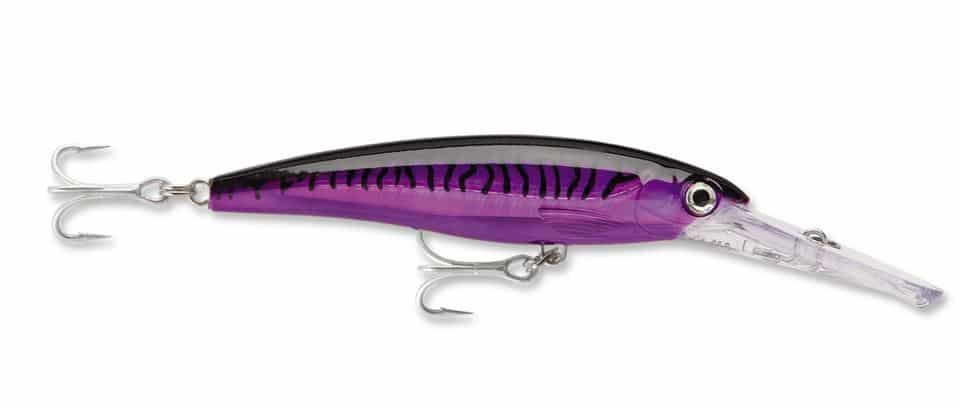
Got Jacks? Move On!
It seemed that McKnight’s hunch paid off when, during the second pass, we hooked a fish that made a spirited run, though not with the characteristic drag-melting pace of a wahoo. After a 20-minute tug of war, we released a bicep-building brute of a jack crevalle, a good 30 pounds. We quickly cranked in the lures and moved on to try several more rigs with little success.
When we moved to rigs farther offshore, we found water conditions that were significantly better. Water temperatures here were around 68 degrees and offered the clear, deep-blue color we had hoped for. As we rolled up on a high, narrow rig, McKnight pointed to the depth finder, saying, “That’s what we’re looking for.” Lighting up the screen were long, slender images of fish stacked like cordwood in 80 to 150 feet of water.
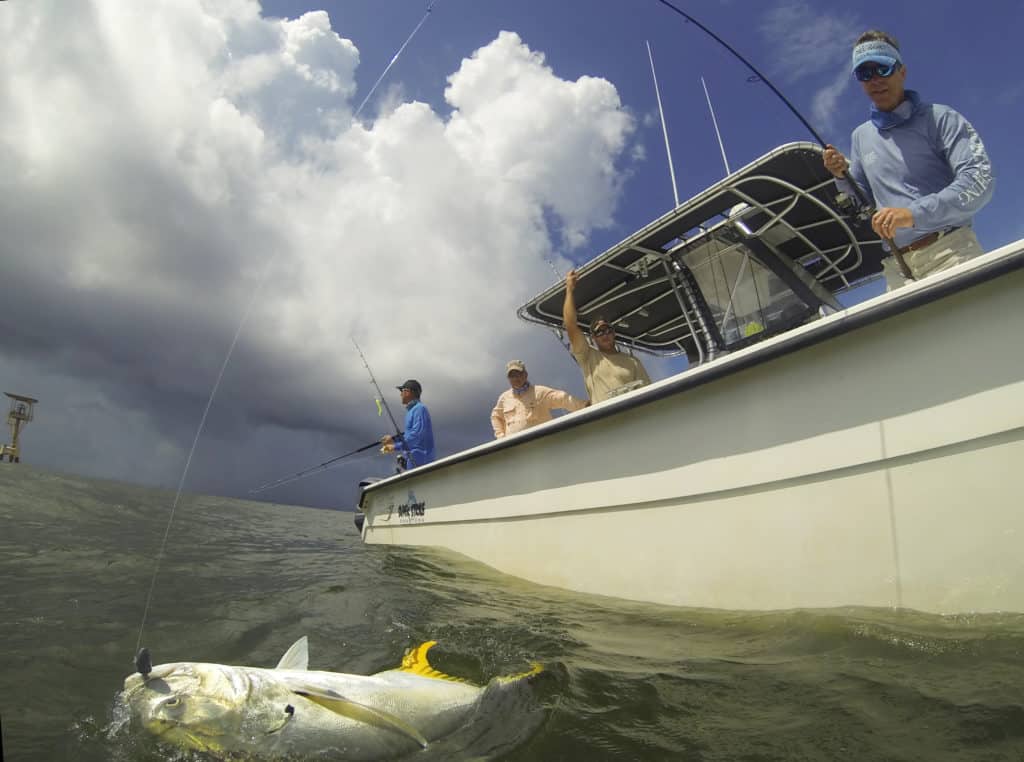
As soon as our plugs passed the first leg of the rig, the right long rod whipped down and began vibrating violently as the reel screamed, the 50 feet of mono top shot disappearing in an instant.
I jumped from the back of the center console, where I’d been leaning, to grab the rod from the right gunwale holder, then watched braid melt away — 100, 200, 300 and approaching 400 yards. I glanced back at McKnight, a quizzical look on my face, silently asking if we might have to chase down this fish. The captain, with the calm voice of experience, said: “That’s a nice fish! Let’s get him away from the rig.”
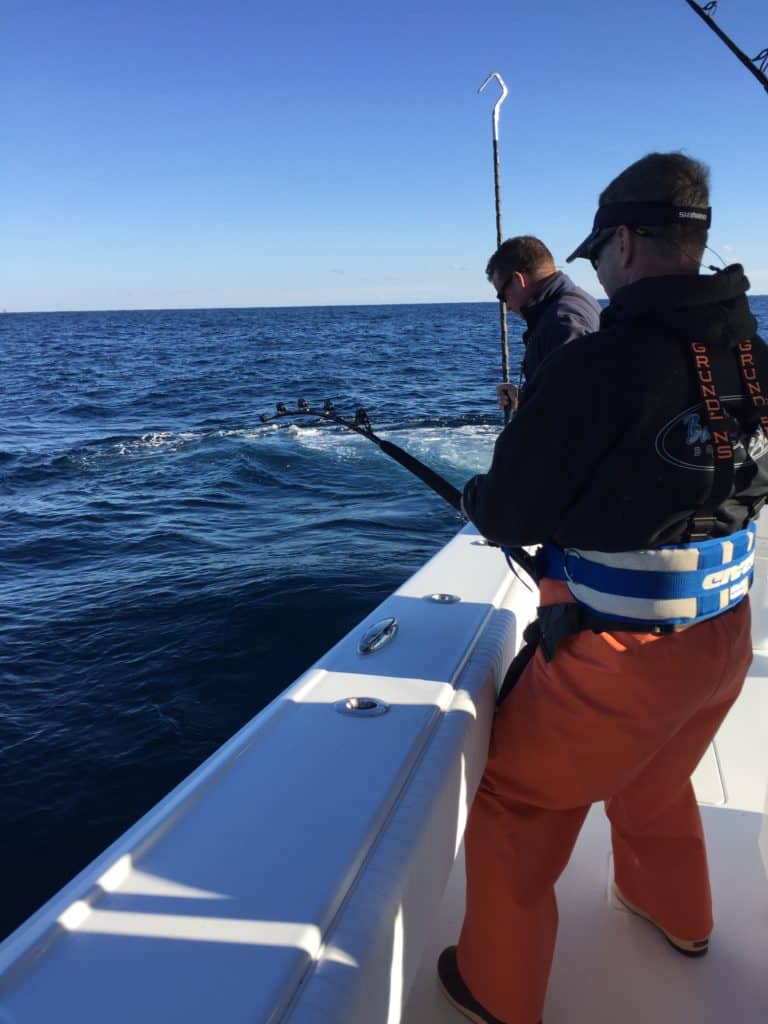
Day’s First Wahoo is a Whopper
McKnight sped up slightly, angling away from the rig, until we had cleared the fish. Pulling fish at a slight angle away from the structure keeps them from reacting violently, as they’re likely to do when pulled at a severe angle away from the path they’re swimming.
McKnight’s maneuver kept the line pressure moving the fish’s head away from the rig and discouraged it from swimming into rig structure and cutting the line. Once we’d coaxed it away from the sharp legs of the platform, it was up to me. As I regained line, I could feel the strength and weight of the fish. Knowing that wahoo are famous for their vicious head shakes, and that they can easily unbutton themselves from the treble hooks on plugs, I tried to bring the fish to the boat as smoothly as possible.
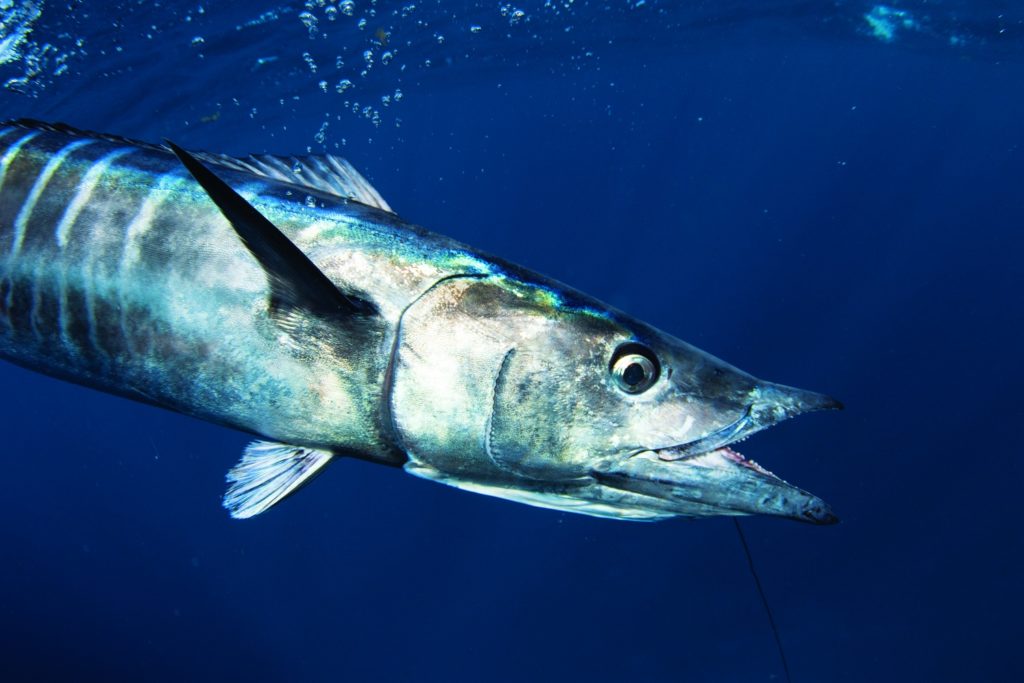
I could not imagine this fish having the energy to do anything more after the long first run of the fight. After 15 minutes, I had it within 100 yards. I thought the end was in sight, but the wahoo had other ideas, and scorched another run of 150 yards or so.
But this run proved different from the first, neither as fast nor as sustained; I could tell the fish was wearing down. With the same steady pressure, I continued to gain line until the wahoo appeared from the depths, about five feet from the boat. McKnight smoothly gaffed the fish and, in a single motion, lifted it over the rail.
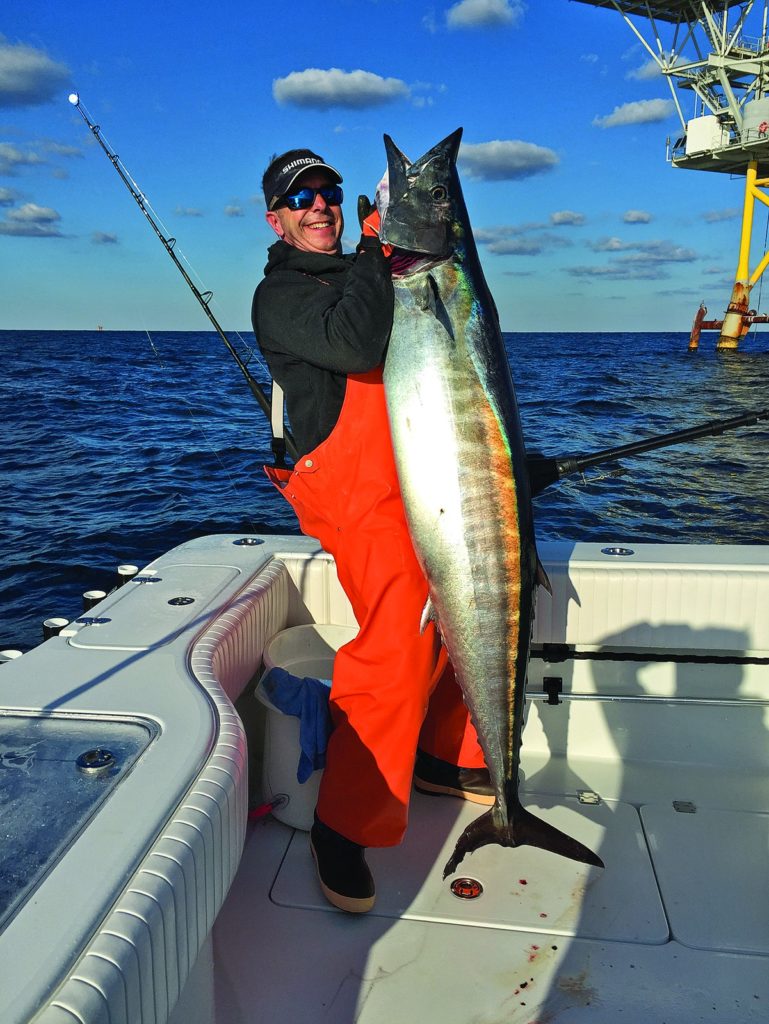
Break Out the Bright Lures
On the second pass by the same rig, we hooked up again and landed another wahoo around the century mark, which hit the deck and found its way to an ice bath in the fish box. The skipper decided to change the trolling setup slightly, adding a pink Yo-Zuri Bonita on the right short.
Heavy, lipless, fast-vibrating lures like the Bonita and the Braid Marauder are designed to troll at a wide range of speeds, and McKnight wanted to give the wahoo a slightly different presentation with a tightly vibrating lure in the spread. Pulled on a spread close to the boat, just outside the prop wash, such lures make a great complement to long lines pulling lipped lures.
Capt.McKnight says: “Generally the brightest colors catch the most fish. It’s best to vary color patterns and types of lures to find the most effective combinations. If you’re in an area where you’re marking fish or where you know wahoo frequent due to current and structure, don’t be afraid to change color and lures to find what works best.”
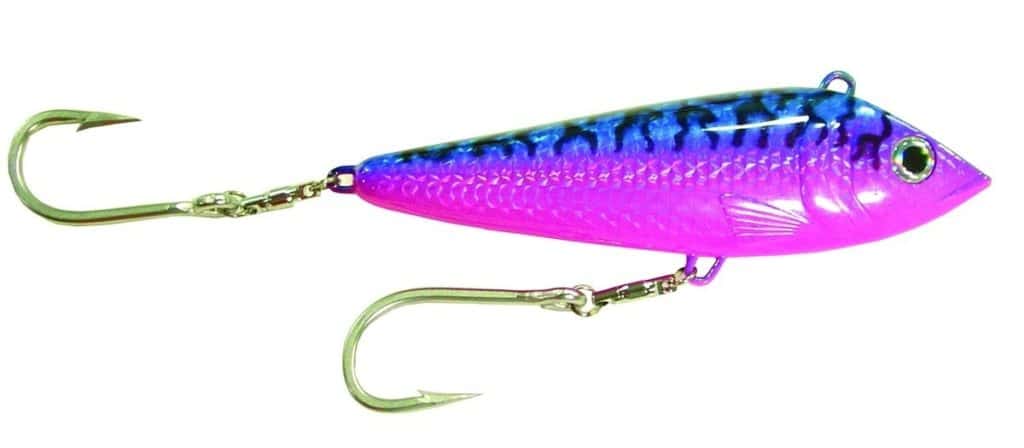
At the end of the day, the long lines with Rapalas and similar lipped plugs caught the most fish. McKnight trolls these at a speed slower than I’m used to while fishing for these speed demons. Our trolling speed never topped 7 knots. “High-speed trolling just hasn’t proven to be as successful in the Gulf as it seems to be in the Atlantic,” McKnight says.
When an angler hooks a wahoo on a plug, it’s important to judge how the fish reacts to pressure and, if possible, try to avoid the violent head shakes for which these surgically toothed critters are famous. When some of the wahoo I hooked that day fought straight up and down, I could feel them opening their jaws and viciously shaking their head. Luckily, most stayed connected.
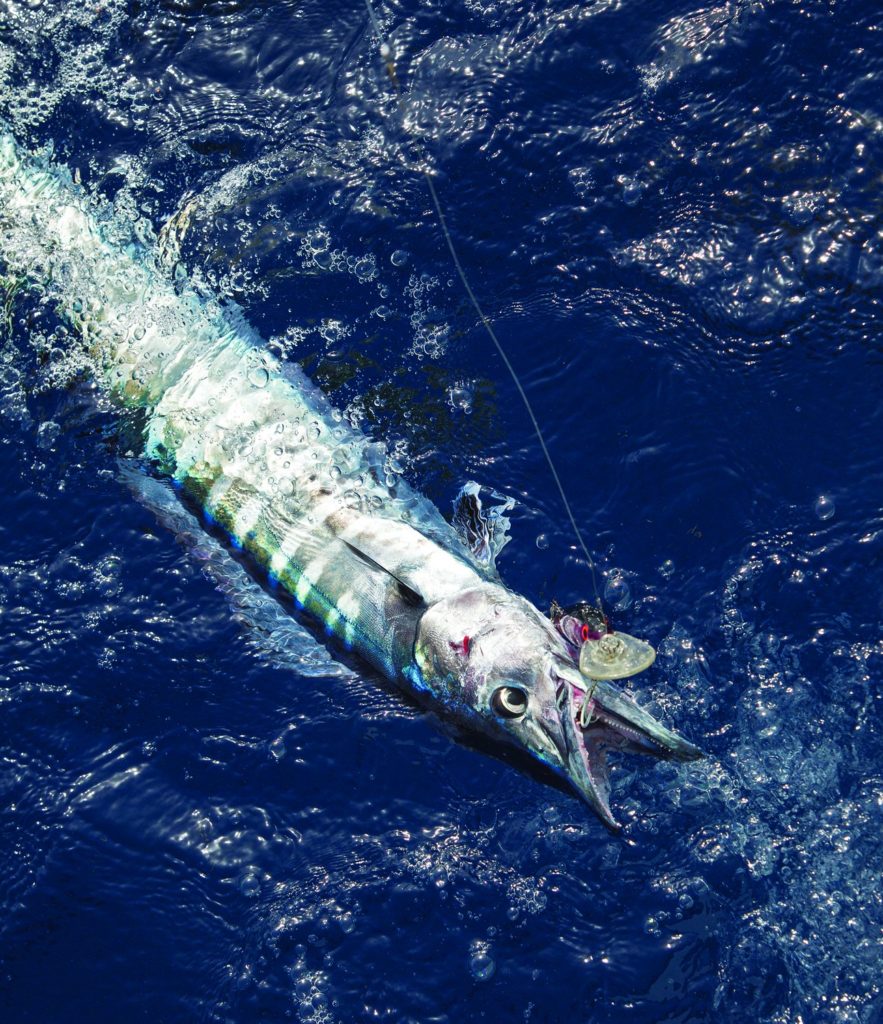
An Expert Trolls the Rigs Strategically
Combine the experience and skills of a seasoned captain with a little luck, and you can enjoy a phenomenal experience fishing winter wahoo out of Venice. McKnight is methodical in his methods of fishing the rigs. He starts by carefully determining the areas of a rig that hold fish, and trolls plugs over them.
“Wahoo are ambush predators,” McKnight explains. “They like to attack from below, so something swimming directly overhead triggers that instinct.”
In terms of where wahoo are likely to be around a rig, I noticed that around the rigs where we marked them, they stayed on the up-current side of the structure. “Wahoo are definitely affected by current and feed more aggressively in faster current,” the skipper explains. He targets his efforts where the current changes direction laterally, such as around the structure of an oil rig, or vertically, such as around significant depth changes that force currents upward.
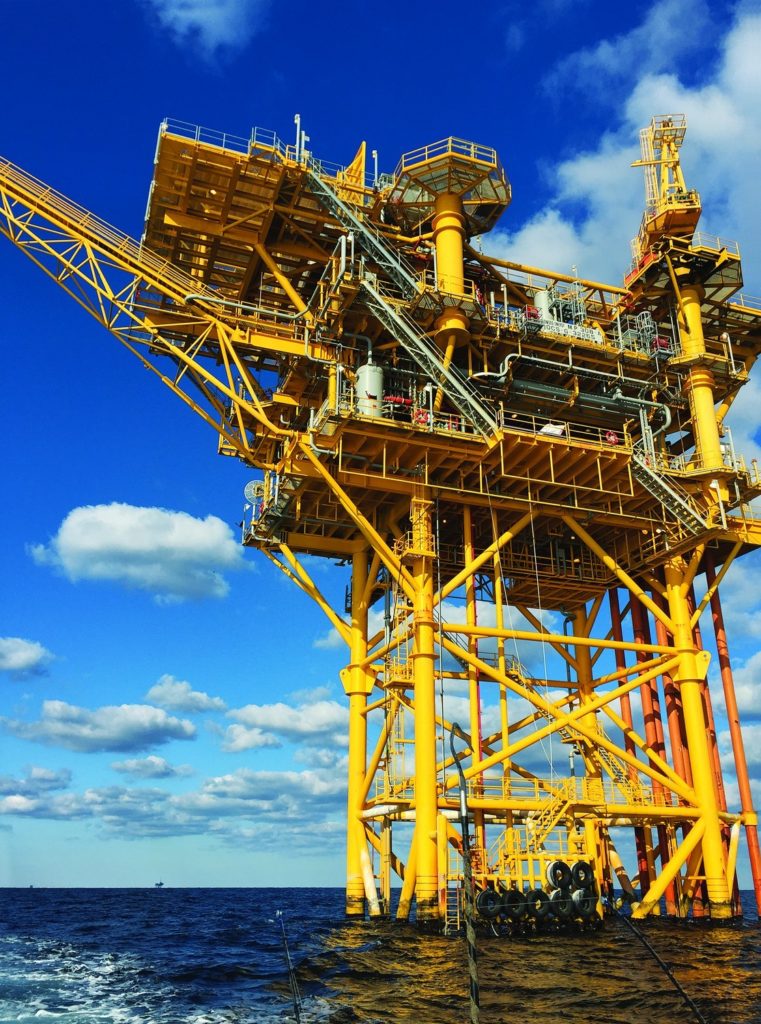
We trolled around several other rigs before we decided to return to the first rig, where we had caught the largest fish of the day. As the Simrad “chirped” away, the images of the wahoo we had seen earlier reappeared, though the fish now seemed more spread out. On multiple passes on the rigs, we failed to get bit, so McKnight decided to change the direction and angle (relative to the rig) of the troll. Sure enough, on the next pass over the area, pulling lures in the opposite direction at a 30-degree angle to the side of the rigs, and passing within 25 yards of the up-current leg, we hooked up to wahoo and even some bycatch — a nice yellowfin tuna.
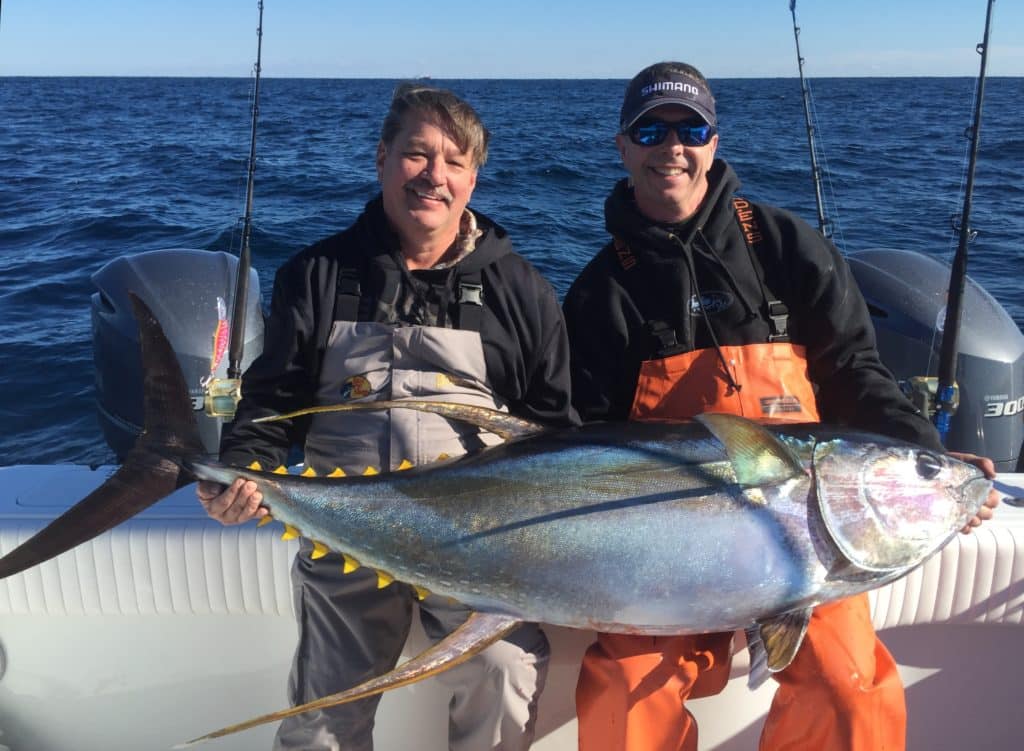
End of a Great Trip
Weston and I ended up with a fish box full of wahoo. One unusual aspect of our trip was an almost unheard-of 100 percent success rate in landing hooked fish. We hooked 10 ‘hoo and landed every one. The trip back to the dock was quick. We made it back to the Southeast Pass of the Mississippi in 30 minutes, cruising at 48 knots. (Unfortunately, we hit something just under the surface while running, knocking out the lower unit on one of the four outboards. The boat still made great time on three engines.)
The great staff at Venice Marina cleaned our fish, setting aside a few wahoo steaks. We took them upstairs to the restaurant, where the chef grilled the wahoo to perfection — a fitting culmination of a fantastic day of winter wahoo fishing in Venice.
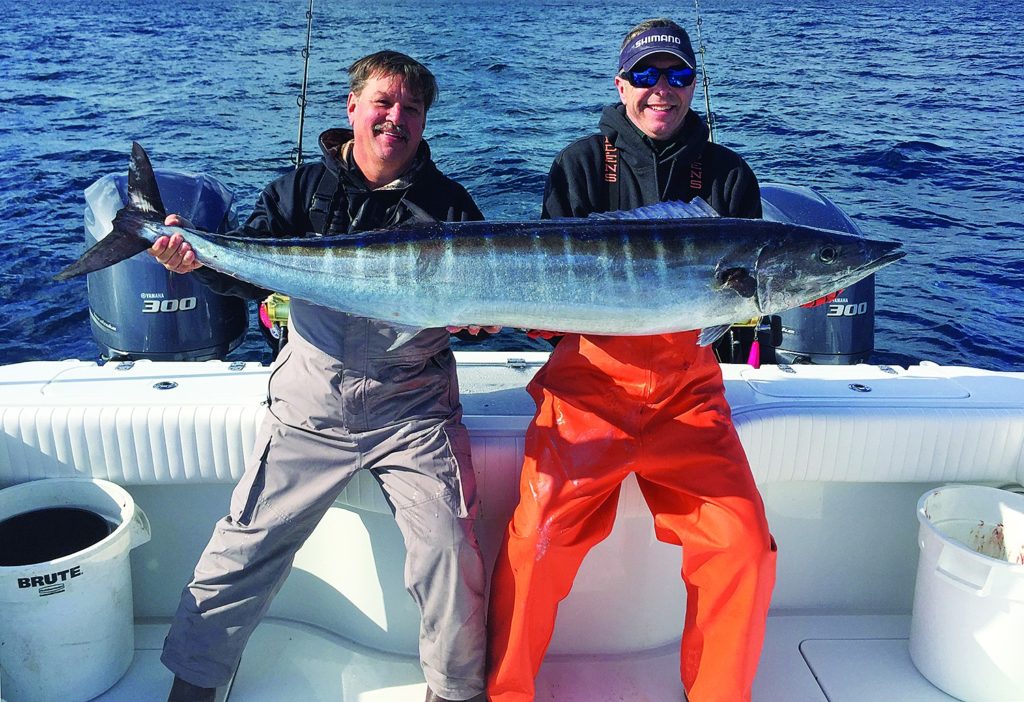
Tips for Planning a Winter Wahoo Trip to Venice
Give Yourself Time
The key to fishing in the winter, with the weather so unpredictable and many days unfishable, is to be flexible. I had cleared my schedule to have a six-day period in total to find a weather window. Secure at least a three-day booking with a charter captain in Venice who will target wahoo. We decided to book four days to ensure we could get at least two fishable days.
Look for a Package Deal
Venice is rather remote; there are houseboats available in Venice proper (the Lighthouse Lodge is about 10 minutes north of town). Most captains will book a package trip that includes lodging in a houseboat, condo, or one of the nearby lodges.
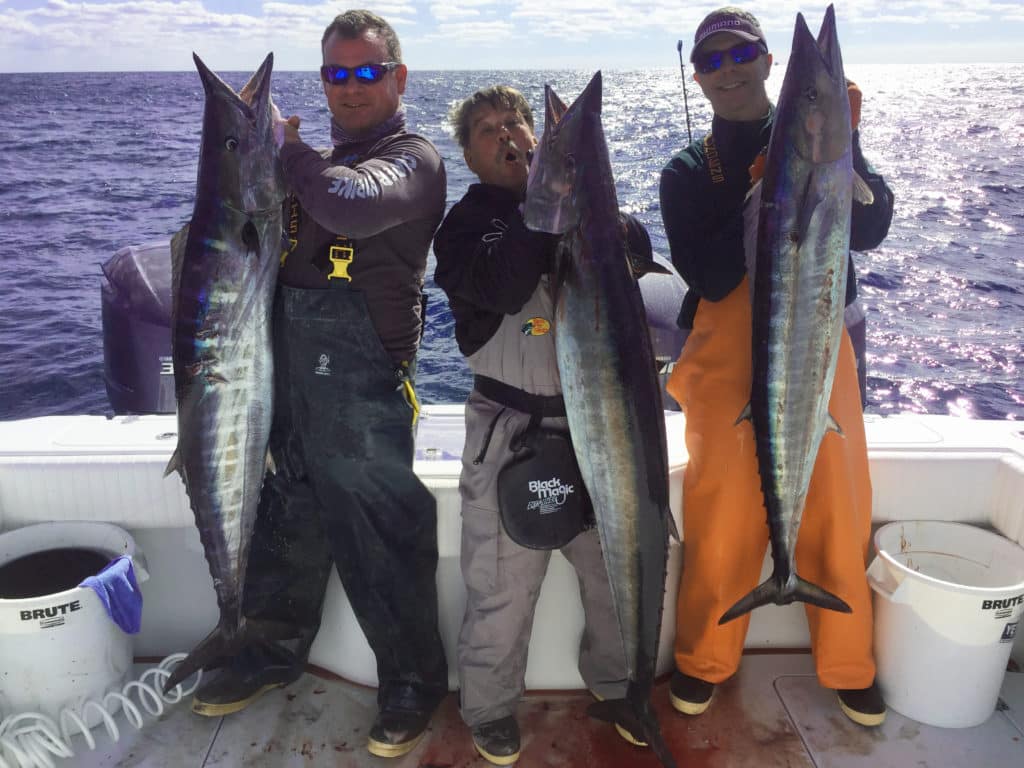
Stop En Route for Food
There are limited grocery options locally, so it’s best to buy essentials you’ll need before you arrive in Venice.
Stay in Contact with your Captain Beforehand
I called McKnight four days prior to our trip to get an idea about the weather, and texted or called every day up to the first day of the trip. Because of unfishable offshore conditions, we moved the trip two days ahead and made it happen. When the weather offshore isn’t cooperating, you can experience some great inshore fishing for redfish. Many captains can substitute an inshore trip for a blown-out offshore one, many times at a lower rate.
How to Bring Fish Home
You’re likely to bring back wahoo from any days you do get offshore. The Venice Marina folks packed the fish in flight-approved, insulated containers with cold packs to check on our Southwest flight from New Orleans. We neatly taped the boxes shut to keep the contents from opening in handling and flight. However, the TSA folks dismissed our handiwork, cutting the tape to check out the contents. We couldn’t talk them out of it, but they were kind enough to retape the containers. If you plan to fly fish home, make sure you allow additional time for the TSA screening. For us, the additional time was a small inconvenience for the great wahoo steaks we had when we arrived back home.
Louisiana’s Wahoo Season
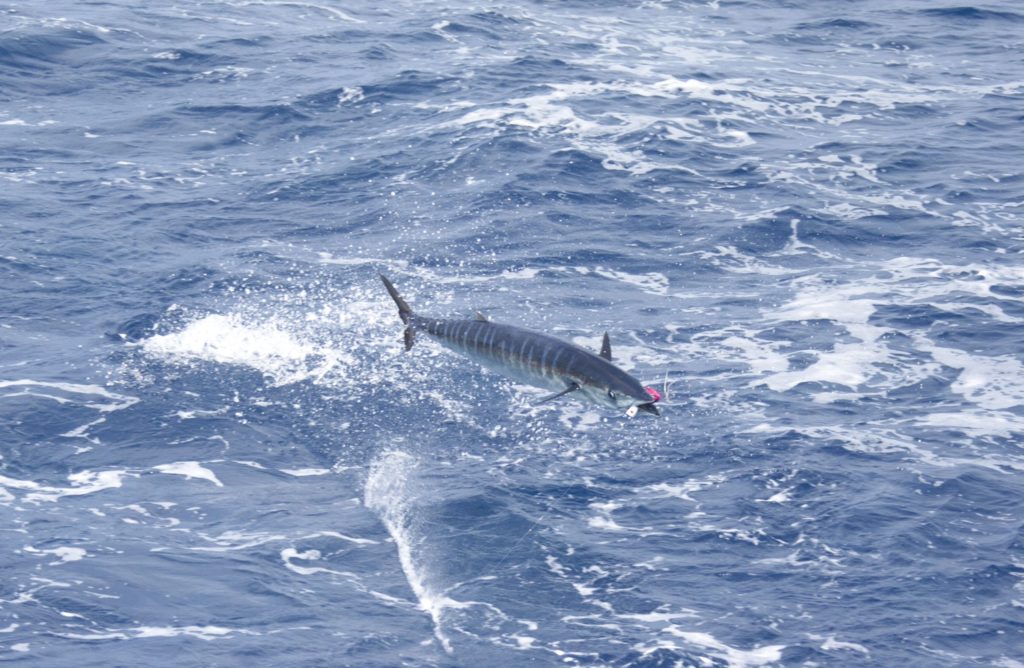
Areas like Cabo San Lucas, Mexico, and San Salvador, in the Bahamas, have gained attention for the size of their wahoo, but what about the best bets for wahoo in U.S. waters? A National Marine Fisheries Service study showed that the catch rate for wahoo was the highest by far off Louisiana’s coast, with one wahoo caught for every five hours of offshore trolling. By way of comparison, that rate is five times higher than catch rates off the North Carolina coast, and six times higher than off South Florida’s coast.
Venice wahoo are typically caught in the largest numbers during January and February, when they average 50 to 60 pounds, which is larger than in the spring months. You’ll find that most charter-boat captains who fish out of Venice recommend January and February as peak months for targeting wahoo, although the fish are also caught with some frequency from March through June, but only sporadically after that, until winter.








